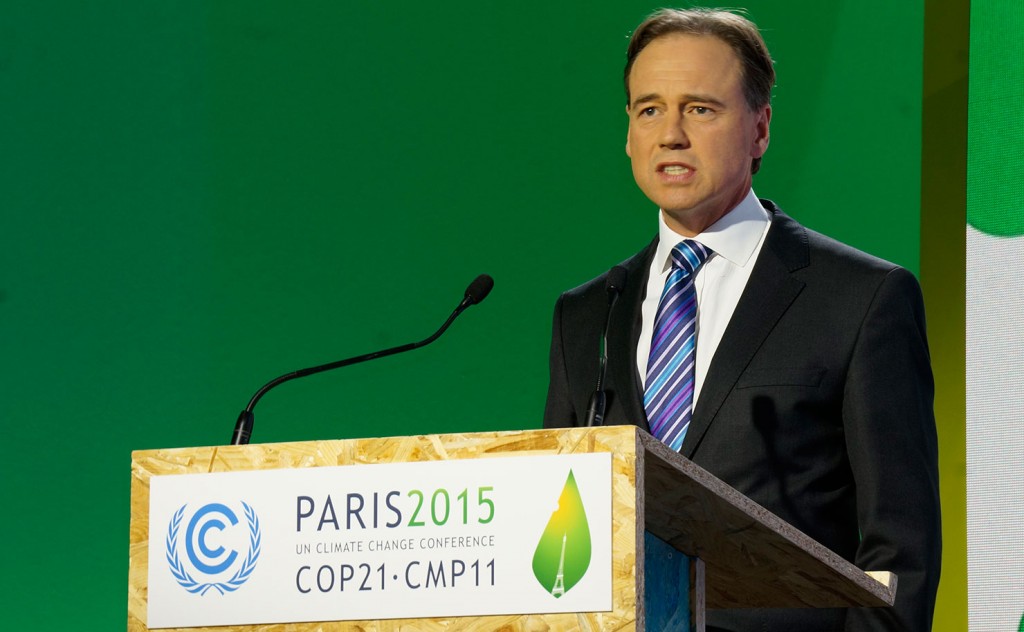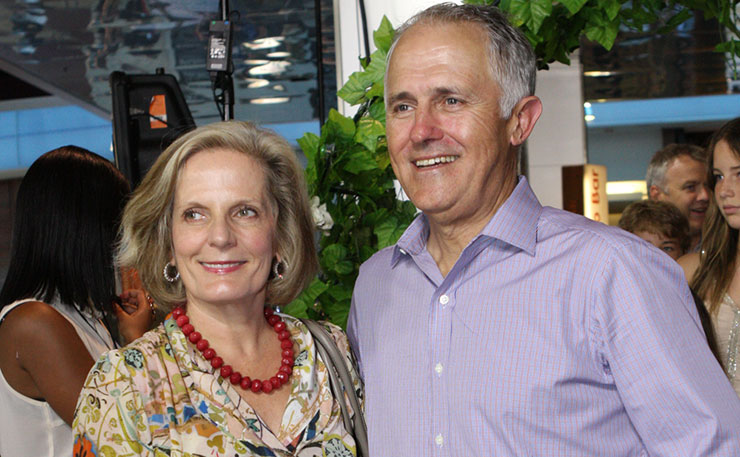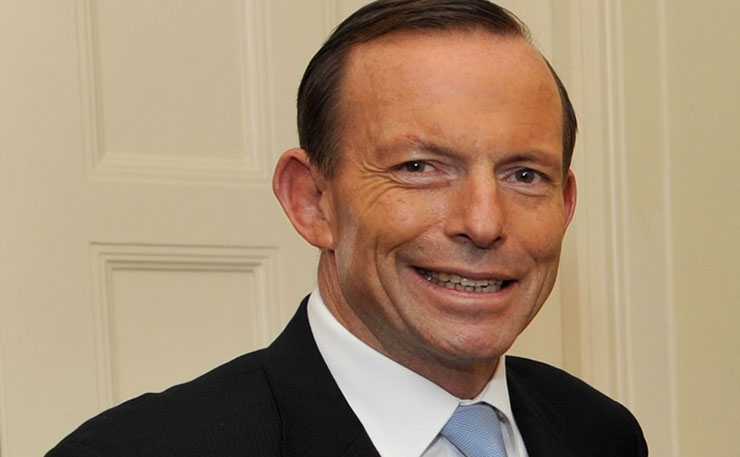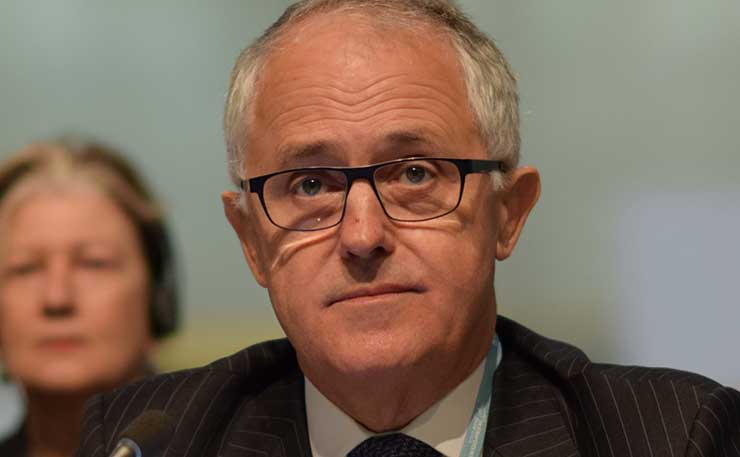With talk this morning of a possible leadership challenge to the Prime Minister by Home Affairs minister Peter Dutton, Ben Eltham reviews what landed the coalition in trouble in the first place.
Covering federal politics is never the most uplifting of tasks, but the past month has been something else again.
The dog days of winter have revealed a splintering Australian polity and an alarming resurgence of overt racism, a Liberal government that has all but exhausted any claim to the moniker of ‘liberal’, policy stasis bordering on dereliction of national duty, and a rightwards drift of conservative thought that should concern all thinking Australians, especially those who identify as conservatives.
I could talk about the racism – about the neo-Nazi on national television, or the Senator flourishing a reference to the ‘Final Solution’ in a maiden speech – and in an accompanying article, I will.
But in this article, I want to talk about policy, because there seems to be less and less media coverage of the substance of policy these days. That’s a problem, obviously, because policy is important. Policy is the sum of the things that the government is doing, in many cases to ordinary citizens.
Despite all outward indications, the Turnbull government is still actually making policy.
My Health Debacle
A good example is the My Health Record debacle. Health Minister Greg Hunt is presiding over the wholesale digitisation of Australia’s health records, against all the advice of IT security and privacy policy experts, and with blithe disregard for the manifest dysfunction and policy mendacity revealed by the system’s disastrous roll out.

Explaining the My Health Record disaster in detail would require a Senate Inquiry, which we’re now getting. But the broad outline is telling, in and of itself. The government is digitising all of Australia’s health records, not because voters want it to, but because it wants to.
It wants to because it wants that data. Your data. It wants to use that data for a range of policy purposes. Some of them are legitimate, for instance to better target health spending and to better address public health priorities. Some of them are not: for instance, to hand over your health records to police or the Tax Office. None of these reasons, however, have been fairly or transparently explained to ordinary voters.
Take the key reason for the My Health Record implosion: the fact that you will automatically be enrolled in it, unless you opt out. The previous system, begun under Labor, was the reverse of this: you had to opt in. Needless to say, many of the pressing privacy problems now besetting the scheme were alleviated (if not completely eliminated) by the fact that citizens had to take the initiative to sign up.
So why did the government change MHR to make it opt-out? The little-reported reason is as simple as it is dismaying: not enough people were opting in. One of the main reasons for the slow sign up was that GPs didn’t want to join the system, and ordinary citizens either didn’t know, or were worried about privacy and security.
The government therefore flicked the switch, automatically signing up every Australian for a digital health record unless they managed to opt-out in a three-month window. The kicker? Even though you have to opt out, doctors don’t. For patients, health records will automatically end up in My Health Record unless they go through the complicated process of opting out. For health providers, the opposite is the case.
Needless to say, My Health Record’s privacy and security settings are a disaster waiting to happen. Records will be available to hundreds of thousands of health practitioners, most of them with no IT training, including medical receptionists and sales clerks in pharmacies. Depressingly, the records themselves will most likely be of only minor value in improving health outcomes. Far from a fully-featured relational database with cleverly designed options for matching patient conditions with potentially dangerous drug interactions, My Health Record is essentially just a government Dropbox for PDFs. Yep, PDFs. The humble portable document format will be the basis for the data on MHR. It’s not an e-health revolution, it’s an enormous exercise in document scanning.
The MHR saga is an apt metaphor for the state of Australian politics in 2018: poorly designed, poorly implemented and poorly understood by policymakers and politicians, MHR is a policy that is almost destined to fail. But, of course, that won’t stop the government from ploughing ahead with it. When it comes to policy disaster, for the Turnbull government, failure is apparently the only option.
Not saving the Reef
This may be the best way to explain what the hell the government was thinking when it decided to give $444 million to the Great Barrier Reef Foundation, a little known environment charity with all the right conservative connections.

Nothing shows the poverty of Australia’s checks and balances on corruption and integrity better than this little exercise in greenwashing, in which nearly half a billion dollars of taxpayers’ money will be washed through a pro-Liberal front, with only the vaguest pretence of probity or process.
When I smashed out a 5,000 word hate-read about Malcolm Turnbull over my summer holidays, I thought the worst that could be said for him was his unscrupulous favouratism for the rich over the poor. But things can always get worse in politics. The Great Barrier Reef Foundation scam leaves ill-intentioned cluster copulations like Robodebt looking like mild adventures in worthwhile reform.
The GBRF scam is almost the perfect encapsulation of the decay of Australia’s body politic, because it is not even corrupt by the letter of the law. It is merely stunningly unethical and breathtakingly dishonest, with a kind of po-faced venality that makes the Bjelke-Peterson government look good.
The Great Barrier Reef Foundation is practically the ideal type of the astroturf organisation, a quasi-charity founded by a group of mining executives and chaired by the former boss of oil company Esso. Tellingly, there is indeed a Bjelke-Peterson link, with the former top bureaucrat of Joh’s administration at the height of its sleaze credited as the founder of the Foundation. Gifted $444 million without tender or even an application process, the Foundation celebrated by taking a group of corporate executives on a boozy tropical frolic to the very same Reef being destroyed by many of their companies’ fossil fuel emissions.
The GBRF’s managing director is a young woman named Anna Marsden, an executive with zero credentials in environmental protection, and whose last job was boss of the Queensland Ballet. She is, however, the wife of veteran LNP operative Ben Myers, Campbell Newman’s long-time chief of staff as Brisbane Lord-Mayor and Queensland Premier.
The board of the GBRF is just as conservative. In addition to Exxon’s main man in Australia John Schubert, the directors include such deep-green environmentalists as Grant King, current boss of the Business Council of Australia, and Steve Sargent, current director of enthusiastic gas fracker Origin Energy. The Foundation also has close links to one Lucy Turnbull, who has lately been entertaining GBRF representatives at the Turnbull harbourside mansion.
The process behind the decision beggars belief. The average used car purchase is accompanied by more due diligence. Not only was the funding not tendered nor applied for, Reef Foundation boss Marsden didn’t even find out about the pot of gold until after it was offered in a meeting between her chair and Prime Minister Turnbull and Environment Minister Josh Frydenberg. The Secretary of the Environment Department wasn’t even in the meeting; no public servant was, until Frydenberg phoned in the deal.
No wonder Marsden described it as akin to winning the lotto.
In any normal period of Australian democracy, the very existence of a $444 million handout to such a foundation would be a government-wrecking scandal, on the scale of the Khemlani loans affair or the Rudd government’s home insulation scheme. But this is 2018, so Turnbulll and Frydenberg are pretending there is nothing to see.

In 2009, Malcolm Turnbull called on Kevin Rudd to resign because a Treasury official made up a false allegation that then-prime minister had been given a ute to drive around in. In 2018, Turnbull can give a group of fossil fuel executives $444 million to greenwash the death of the Great Barrier Reef, and swan on to his next cabinet meeting like this is all perfectly normal. If this is a farce, it’s a black one.
National Energy chaos
Of course, when it comes to policy disaster nothing can match the smoking ruin that is energy policy in this country. Bin fire? Train wreck? Land war in Asia? Choose your own metaphor, they all pretty much apply. Australian energy policy is a man-made disaster nearly as bad as the problem of climate change itself, and almost solely the creation of conservative politicians.
Even to briefly explain how we arrived at the current impasse over the government’s laughably named National Energy Guarantee is to detour through a decade of bad faith, broken promises and most-worst solutions.
While no-one would describe the atmosphere of the Rudd-Gillard years as calm or deliberative, by 2012 Australia had a comprehensive, workable energy policy that both reduced carbon emissions and laid out a long-term timetable for the industry. It was legislated as the law of the land. A transparent process underpinned the setting of emissions targets, overseen by an independent government authority whose role was to advise the government on the best way to meet Australia’s international emissions targets. Important safeguards were put in place for emissions intensive industries, and there was generous support for nascent technologies in the renewables sector that promised to bring future cost savings for energy consumers.
All this was just five years ago. It was called the Clean Energy Future policy and it operated in Australia from 2012 to 2014.
Tony Abbott’s government abolished it, doing away with the Gillard government’s cap on emissions and killing off any price signal penalising carbon pollution. Repealing the carbon tax was a celebrated moment for conservatives, giving us that famous photo of the Coalition front-bench embracing in a circle of reactionary love.
But the carbon tax repeal was also the direct cause of the current problems in energy policy, because it led to a devastating drought in investment from renewable energy companies, who understandably decided that Australia under Abbott was not the most welcoming of places in which to build new solar and wind farms. With renewables suddenly on hold and no longer having to pay a price for pollution, fossil fuel generators cleaned up. The windfall profits, heaped atop gold-plated networks, fed through into skyrocking electricity prices for consumers.

The doleful legacy of Abbott continues to haunt energy policy, just as the man himself lingers wraith-like on the Coalition back bench. Even after Turnbull replaced Abbott in the top job, Australia’s energy system has been held hostage to the bizarre love affair of the Liberal hardliners for fossil fuels. In 2016, Turnbull asked Chief Scientist Alan Finkel to come up with a workable road map around the energy impasse, which Finkel did.
But Finkel’s policy was another variation on an emissions intensity scheme. That was anathema to Abbott and his coal-fondling cronies. So Turnbull and Frydenberg shelved the Finkel plan, and spent another year coming up with their own plan, the laughably named National Energy Guarantee, or NEG.
The technical aspects of the NEG are fiendishly complex – so complex that it is thought that only a handful of energy analysts truly understand all the moving parts. But the political rationale for the NEG is very simple: to keep the Coalition back bench happy. In order to do that, the NEG has been constructed in such a way that the policy will ensure there will be almost no reductions in carbon emissions. It will also supposedly deliver a hypothetical $550 a year in savings to electricity consumers.
To do this, the NEG has had to lie. For instance, on carbon emissions, it claims to be consistent with Australia’s Paris climate change commitments. Except it isn’t: the claimed reductions of 26-28 per cent for the electricity sector are not enough to meet Australia’s overall target, which must take into account the whole economy.
The claimed cost savings are just as incredible. No-one who understands Australia’s energy grid thinks that the NEG will deliver lower prices. Many think it will lead to higher prices. This is because the best way to reduce prices is to bring new and cheaper generation online. But the newest and cheapest generation is renewable energy. The NEG assumes no new renewable energy will be added after 2020-21.
In summary, the NEG is just a great big fairy tale, spun up to fool some very gullible backbenchers. So threadbare is the policy, the government won’t even release the assumptions behind the policy’s modelling. Instead, the NEG is backed up with some home-cooked spreadsheets that have enough numbers in them to fool innumerate politicians, but without enough numbers so that analysts and academics could actually check whether the sums add up.
So bad is the NEG, many in the renewables sector would prefer that it didn’t happen at all. Renewables are winning, and winning quickly. The status quo will deliver quite rapid decarbonisation in coming years, for the straightforward reason that renewable energy is cheaper and more reliable than ancient coal plants. A lot of this new renewable energy is being driven by state-based targets from Victoria and Queensland. The NEG would supervene on such targets, probably shutting down much of the new renewable investment that we’ll need to reduce emissions and electricity prices going forward. It’s a lose-lose. Doing nothing would actually be better.
Of, course that’s if the Turnbull government has an energy policy at all. Does the NEG still exist? Or is there a new NEG-plus, or should it be NEG-minus, without any emissions targets? It’s an interesting policy question, but given the current chaos, who can keep up? What will the NEG be tomorrow? Or next week?
As the weekend’s leadership convulsions show, it might have been smarter for Turnbull and Frydenberg to just have nothing. Unfortunately, the Liberal base probably wouldn’t have allowed that either: the pressure to do something about electricity prices is driving much of the current unrest, even if those agitating don’t understand (or refuse to understand) that lower prices actually means more renewable energy. No wonder Frydenberg finds the politics so different. It’s a circle that can’t be squared.
As a result, energy policy is at the heart of devastating leadership instability in a major party, once again.
My Health Record; the Great Barrier Reef Foundation; the NEG. All three are examples the Potemkin village that is Australian politics in 2018.
And I haven’t even talked about the racism yet….
Donate To New Matilda
New Matilda is a small, independent media outlet. We survive through reader contributions, and never losing a lawsuit. If you got something from this article, giving something back helps us to continue speaking truth to power. Every little bit counts.




